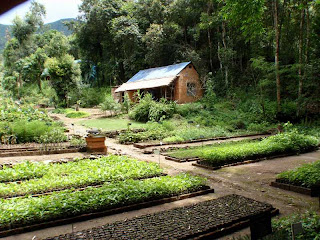Well I think I have gone through all the hard and testing parts of the journey to Simikot, in Humla, without actually getting there.
To get there you need to get a flight from Kathmandu to Nepalgunj, and as there were no flights from Nepalgunj to Simikot, the decision was made to drive to Surkhet.
The journey by road, in a hired mini van, goes through approximately of 100km of windy roads. The roads are about the width of a truck, again shared by everyone, cyclists pedestrians rickshaws and motorcycles. There were a number of mudslides along the road, so the driver had to keep an eye out for road repairs, buses coming the opposite direction on blind corners (remember, one lane wide) and muddy sections where some of the road had washed out.

There were some good sights along the way, some I managed to capture.

The biggest surprise was my colleagues, Manish and Paras managed to have a computer game while going up through this. Of course I'm trying to see if I can develop this valuable skill.
I have included photo's of them.

We arrived in Surkhet 4 hours later, and our flight was at 6am the next day.
Now a bit of an explanation is needed about the flights, and the workings of the Airport.
It seems that most flights to Simikot, 3000m above sea level, are early in the morning, as the winds can become to strong in the afternoon. Also if it is bad weather, it may not be safe. So flights often get cancelled. So if you have flights cancelled for two days in a row (not unusual) everyone is quite keen to get to there destination. If you arrive at 6am at an airport, with the military manning the gates, you can often get a large crowd of people outside waiting to get in. It often appears that it is who you know, to how easily you can get through the gates to catch a flight that may or may not be flying. Sometimes you can wait 5 days, in a hot humid town with nothing to do, except to go to the airport daily to see if there is a flight you can get on.
After we had someone see us, who knew who to talk to, we managed to book on a flight, and wait to see if it was flying. There was a flight from the previous day, that was cancelled, so they were due to fly out at 6am, and we were due to fly at 10am.
So I took the opportunity to try and rest at the outside cafe/shop.

The best quote I heard was from Manish, in reference to us waiting outside the airport.
"It is quite an experience we are having."
"But a very boring and useless one at that."
30 minutes before I was due to catch the maybe 10am second flight (don't worry it was cancelled) I had a call from my field officer from Engineers Without Borders telling me not to get on the flight.
There have been some suspected outbreaks of Cholera around the Humla region, which we were monitoring. They were some distance from Simikot, so it seemed to be okay. But there were reports of a few deaths in Kalika, 28km South of Simikot.
Please note that this is 28km direct, not considering the mountain ranges in that part. So it takes 3 days to walk that distance.
If anyone from Tribal are reading this, no I am not going to consider training runs through mountain ranges where if I slip, I slide 500m down into a freezing river.
So Engineers Without Borders thought it was wise I didn't go at this time. I'm now back in Kathmandu after a 4 hour minivan trip, and a 30 minute flight back.
It now seems like the outbreak was a diarrhea outbreak, but word is that it is now contained. I will try and keep getting information on the area. RIDS, who I work for, are talking to the local health office, and are organising to get medicine supplies out to the area as well.





























